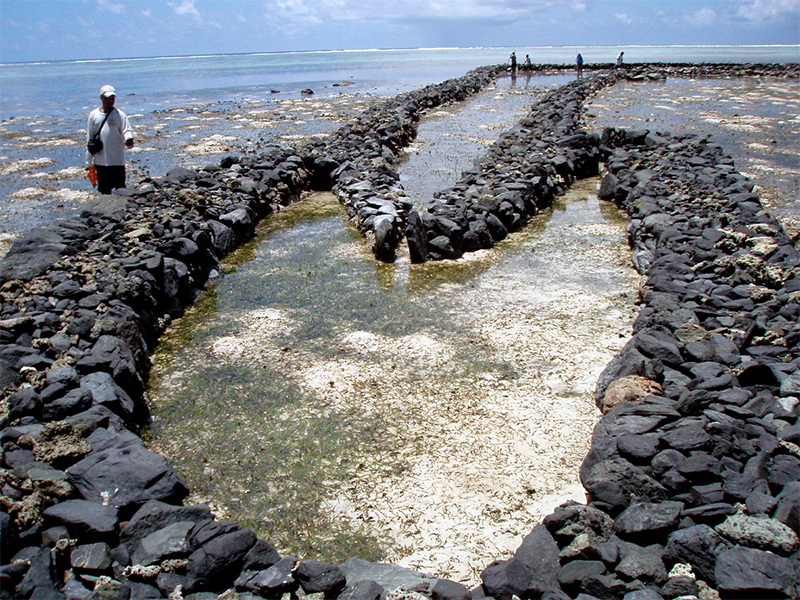The Genius of Fishing with Tidal Weirs
Native and non-native scientists have come together to counter overfishing with an ancient practice.
BY KATA KARÁTH

Seen from the air, the Micronesian state of Yap is a jewel-green archipelago of dense forests patched with taro fields, fringed by mazes of mangroves, and trimmed by coral reefs. And, fanning out from the wrack lines into the turquoise shallows like a frill of beaded tassels is a geometric design of rock structures that are shaped like arrows, beech mushrooms, or penises. The Yapese call these structures aech, and they are tidal fish weirs, one of the world’s most common Indigenous mariculture tools.
“Our aech is called Aechwol because of its luck,” says Thomas Ganang, whose family has owned for generations an aech near the village of Gachpar, off the eastern shore of Gagil-Tamil Island; in Yapese, “wol” means “luck.” “Whatever fish I catch inside the aech is a sign of luck. So it’s an ‘aech with good luck.’” Ganang, who is 66, fondly recalls how, when he was still a boy, his father, Laman, took him to the faluw—a traditional men’s house in Yap—to teach him everything about fishing, including how to use aech.
